
Lai Chau
How to travel to Lai Chau for your best experience
Lai Chau Travel Guide – What to do, when to visit, and more…
Lai Chau is a north-western border province of Vietnam, 450 km southeast of Hanoi, particularly known for its mountains and ethnic minorities. Situated at an average altitude of 1,500 meters above sea level, the landscape is beautiful and made up of high mountain ranges stretching from the northwest to the southeast with narrow valleys, beautiful rivers and springs completing the natural beauty of the place. The province is also home to 20 ethnic minority groups, each of which has its own cultural features. For most overnight travelers from Hanoi and nearby areas, Lai Chau is a perfect spot to escape from the busy city life and enjoy the magnificent natural setting. If it catches your interest, let’s find out how to travel to Lai Chau for your best experience in this article.
Frequently asked questions
O Quy Ho Pass

Located at an altitude of over 2,000 meters, with a length of over 40km, O Quy Ho, the famous and desirable pass with the exciting stages of zigzag road, is the legendary route that challenges adventurer lovers to come to explore. Standing on the top of the pass, you will admire the grandiose and majestic beauty, feeling the fanciful beauty of the scenery on the mountain pass. For each one traveling on O Quy Ho, getting along with the pass on sunny days is a blessing in life.
Ta Leng Rice Terraces

With the rice terraces softly winding like a silk band around the steep hillside. Ta Leng attracts photographers every wet season or rice harvest. In the distance, you can see Ta Leng’s undulating roofs with simple and peaceful houses in the surroundings of the mountain, it makes you forget the tiredness to immerse yourself in a quiet space. Particularly, in September/ October, the fragrant rice is seen everywhere. Watching from afar, the rice terraces look like a yellow ladder leading to the mountain peak between the vast sky. It is truly the magnificent beauty of a natural picture, drawing domestic and international tourists.
Sin Ho Town

Meaning a place of rivers and streams by the local language, Sin Ho boasts dense tree forests and charming natural scenery. Located at 1,500 meters above sea level, with a year-round cool climate and beautiful landscape surrounded by the sea of white blur clouds, Sin Ho takes your breath away with its natural grandeur. Especially, if coming here in the planting season of September/ October, you will admire the golden terraced fields scene and witness the bustling village with games, songs, markets from the ethnic people: Red Dzao, Hmong, Sila, Cong …
Pu Sam Cap Cave:
On the road to Sin Ho plateau, you will see limestone mountains formed from the tectonic era, the karst type terrain that creates the cave system in the mountains with magical stalactites. This rocky region is called Pu Sam Cap, meaning the three big mountains overlapping. With an area of 600ha, Pu Sam Cap Cave attracts large tourist attention because of the broad spatial and stalactites formed over thousands of years, the rock clusters with different shapes, where visitors can easily recognize the very lively stone dragons, jade tower, lions and most impressive pictures of stone terraces in the cool and transparent. One cannot help but be overwhelmed by the spectacular natural scenery made by the Creator, with romantic, subtle, harmonious space of northwestern mountains.
Pu Ta Leng Peak
Underneath the Mount Fansipan – the roof of Indochina is Pu Ta Leng. In order to reach the peak of Pu Ta Leng, the visitors have to prepare psychological readiness for climbing the stream through the forest thoroughly. A secret to traveling Lai Chau safely is to go on a sunny day if you want to successfully conquer the peak of Pu Ta Leng mountain. If it rains, the road is extremely difficult and also easy to encounter natural disasters such as flash floods.
Vang Pheo Hamlet
Located at the foot of Phu Nho Kho mountain, Vang Pheo hamlet is about 30km from Lai Chau town, on the front is winding Nam Lin stream creating a charming picture. This is the inhibition of White Thai people and still preserves the unique and original cultures of Thai ethnic groups. The villagers were content to serve tourists with services like homestay, dining, cultural performances, entertainment, shopping… Coming here, visitors get to learn embroidery, weaving, rattan products, and especially very famous silver carving and buy products like a necklace, brooch.
Na Luong Village
Thanks to the pristine beauty and the remaining cultural values, the village of Na Luong has become a tourist attraction catching the eyes of adventurers. The stilt houses hidden above the green trees in the fog and the women in colorful clothes will impress you right away. The inhabitants who are of the Lao ethnic group know how to preserve striking features of the tradition, which makes a unique spark for culture lovers who wish to discover the casual lives of the village.
Tac Tinh Waterfall
Tac Tinh Waterfall is known as mother nature provides fresh and plentiful freshwater for people in Tam Duong district. Every time the rainy season comes, the water from the top of Hoang Lien Son mountain makes the image of Tac Tinh Waterfall be lively with the water flowing down to the lake looked like white silk stretching to the bottom of the waterfall.
If you are the first-timer visiting Lai Chau, we suggest a 2D1N itinerary with the following detail.
Day 1: Pu Sam Cap Cave – Sin Ho Town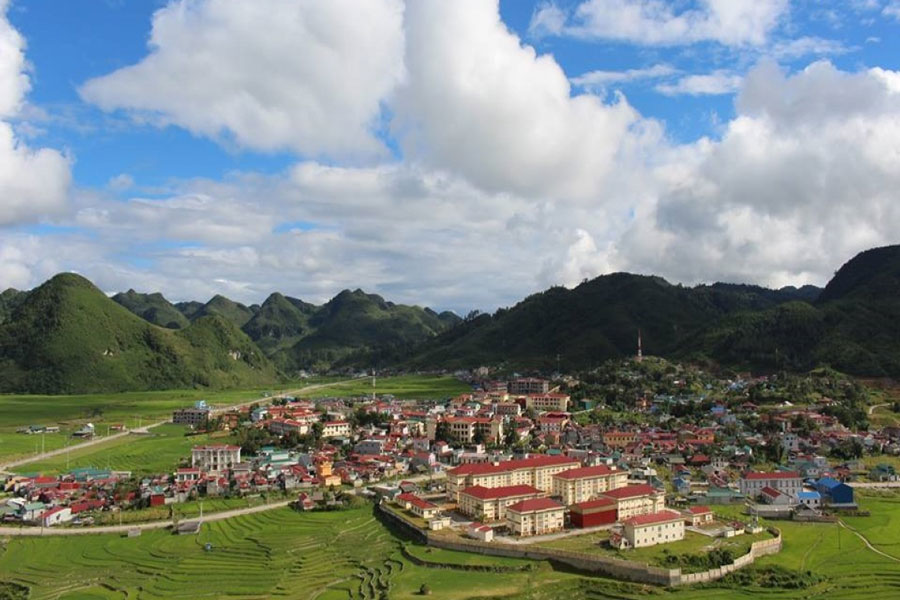
AM: Visit Pu Sam Cap in the early morning to witness the magnificent view of the mountainous area of Lai Chau. Discover the cave for some photographs opportunities. Then move on to Sin Ho Town.
PM: Spend the rest of the day to learn about local culture and practice. Enjoy the beautiful paddy field scenery, hang around the village and experience authentic food before having a homestay with locals.
Day 2: Na Luong Village – Tac Tinh Waterfall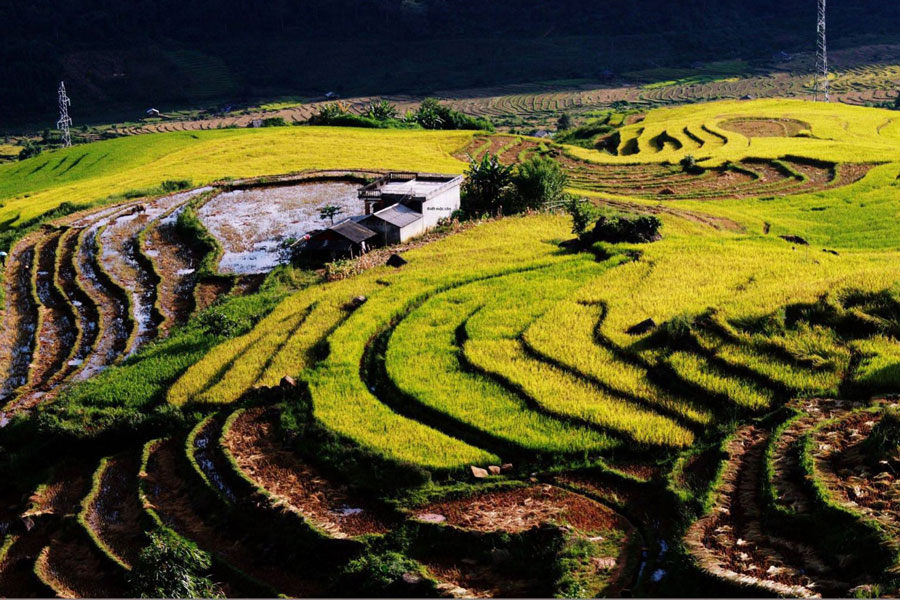
AM: Travel to Na Luong Village to discover the spot and experience the ethnic lives. Take some photos, do some shopping then move to Tac Tinh Waterfall.
PM: Enjoy the fall with cool water and fresh air. May take a chance to swim, fish and experience local food on the spot.
If you are a veteran backpacker, please feel free to manage the trip on your own and alter it when needed, else, we recommend you join a tour organized by a professional company, that can free you from hassles and keep you safe throughout the journey.
Lon Cap Nach (the Pig Carried under the Armpit)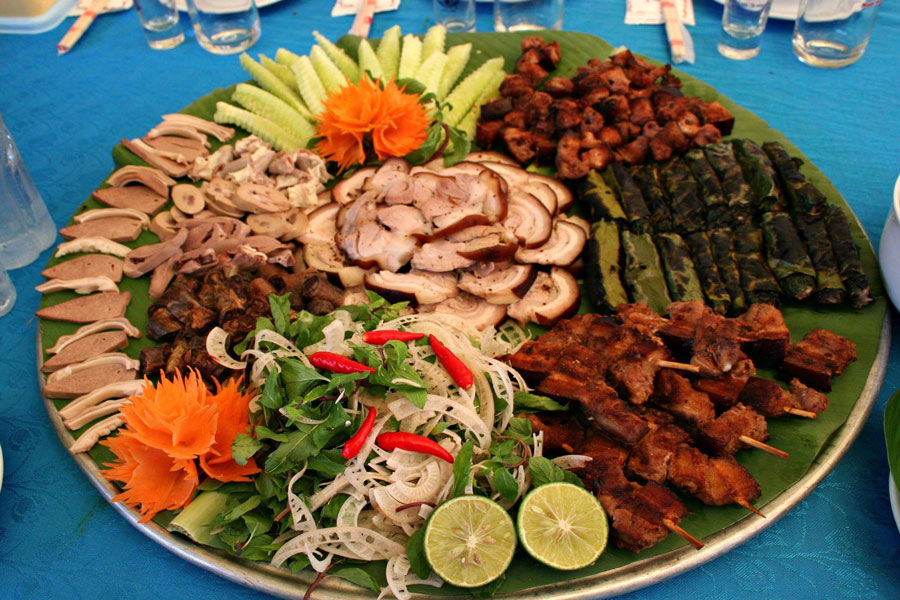
This kind of pork is particularly nourished. The inhabitants leave them to feed in the forest. They must seek food to survive and reproduce. When they are big, the breeder catches them easily in their shelter to turn them into delicious meals.
Smoked Pork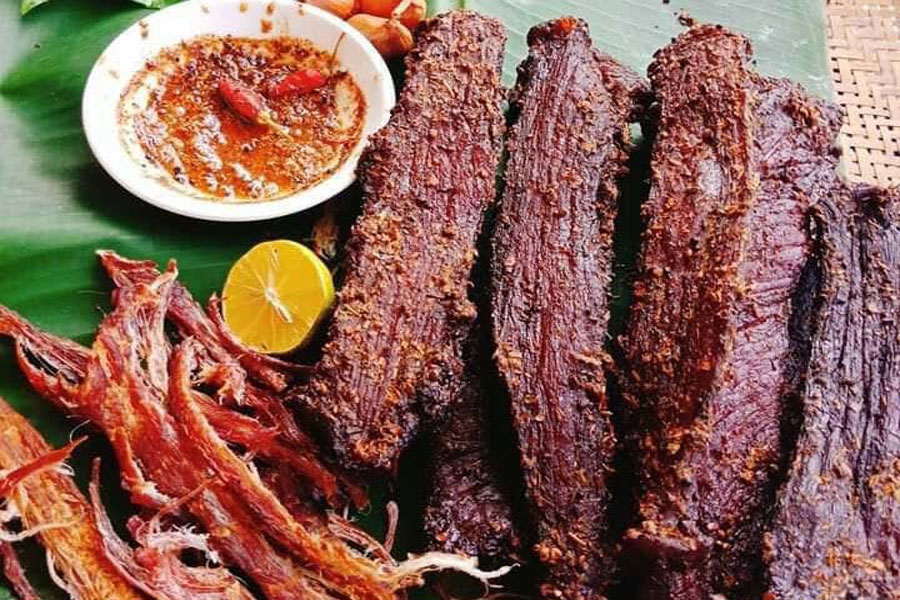
This dish has a typical mountainous as well as impressive taste. Only made in the winter, the pork is marinated for a long time about 5 – 7 days, then hung up in the kitchen and smoked until the meat is dry, fat is melted. You can taste this dish with some spices such as Mac Khen, pepper, cardamom, and the special scent of smoke and sweetness of the meat, surely it will definitely make you feel very interested about this dish.
Xoi Tim (Purple Glutinous Rice)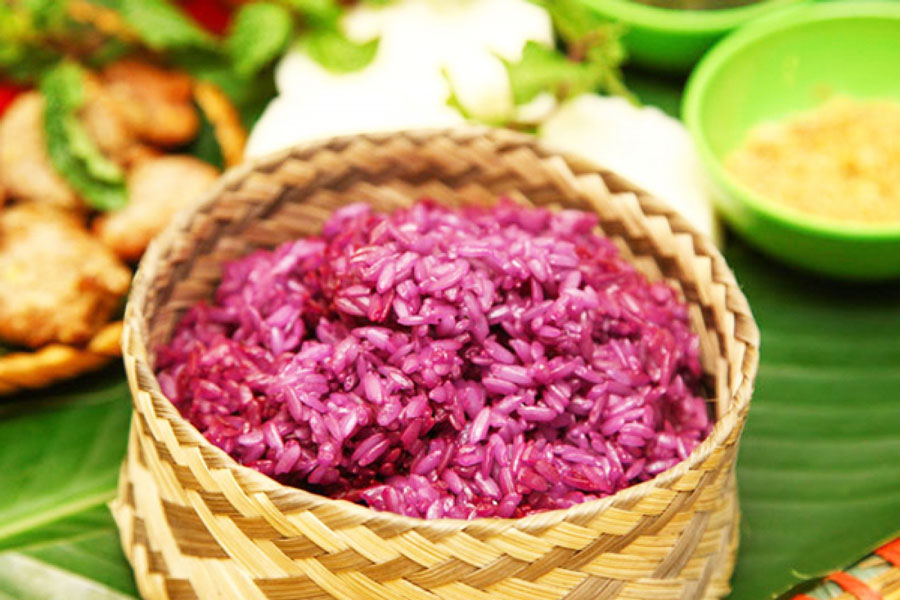
Glutinous rice is soaked in water for 6 to 8 hours, dyed in purple by the essence of Khau Cam leaf, cooked in a special wooden pot, offers the eaters a taste and smell unforgettable.
Rocky moss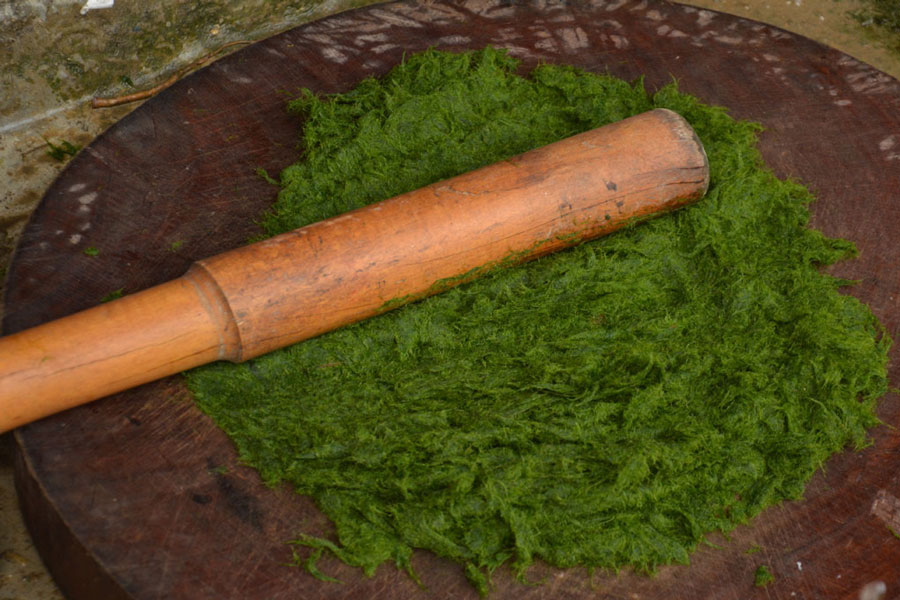
Known as indispensable in the engagement party of the Thai peoples in Lai Chau, the rocky moss is processed into many delicious dishes as rocky moss soup, grilled rocky moss, sautéed moss with garlic leaf… Cooking this dish requires patience. Firstly, they have to take the moss out of the water and clean until they are really clear. This rocky moss will become greener, soft and quite cool after primary processing. After this step, this moss can be processed into tasty dishes. The strong smell of the moss combined with the forest spices makes the unforgettable dishes.
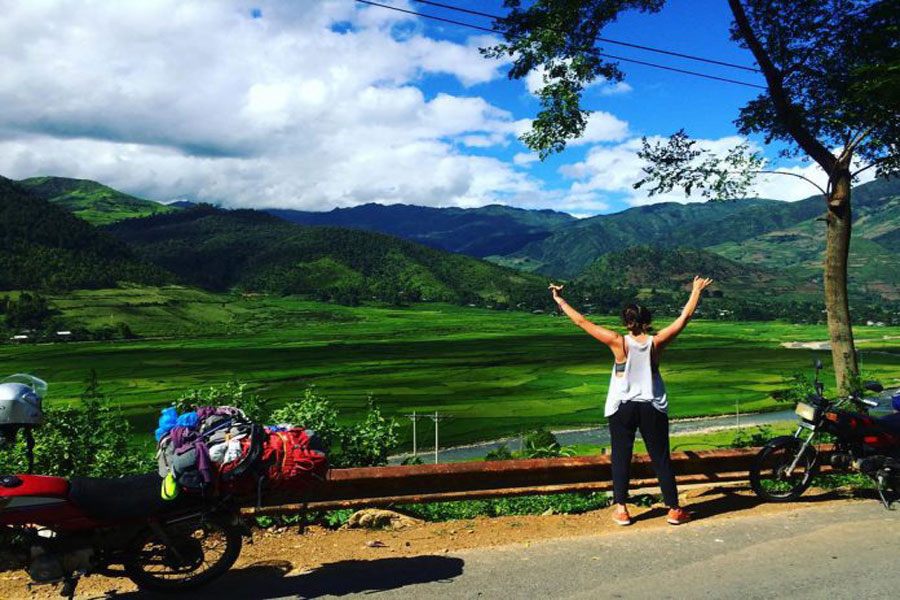
As with the rest of the northwest of Vietnam, June through to September in Lai Chau is the wet season. Expect heavy rainfall and misty weather during this period, when landslides are common that slow you down outside town. Travel wise, late September to October and March through May are the best bet. Evenings and early mornings can be cool to cold year-round during this time.
The most common way to get to Lai Chau from Hanoi is by public bus, which can be booked at the My Dinh Station. The trip takes about 9 hours, with fare starting from $20.
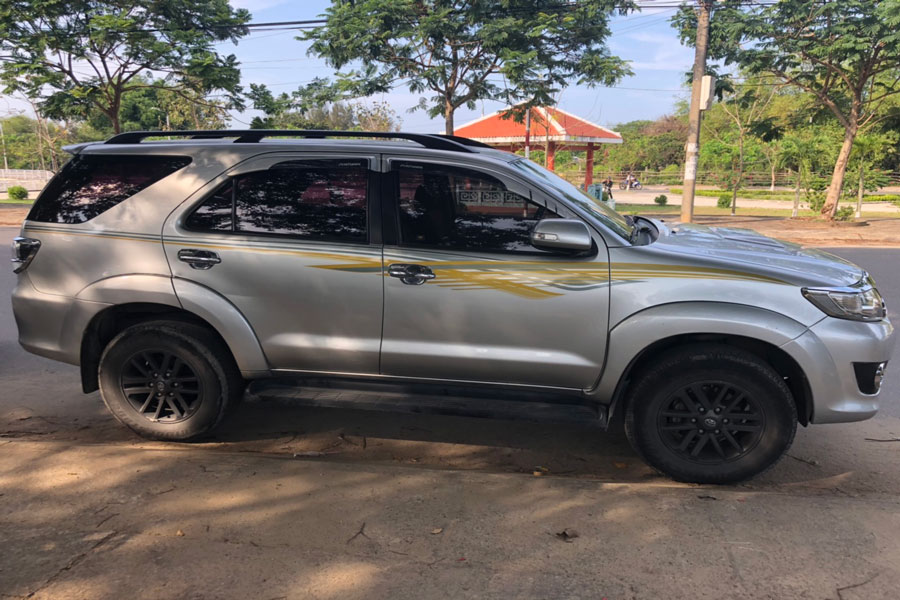
Alternatively, renting a motorbike to travel like locals may be an interesting idea, however, take extra caution as the route is long and the traffic is not easy as in the city.
Else, you may consider grabbing a taxi to get there, but at the much higher fee, of course.
Throughout this article, we wish you to have an idea of how to travel to Lai Chau for your best experience. In case you are looking for your own travel agent, who can offer a wonderful and hassle-free trip to Lai Chau, please feel free to let us know. We always commit our best to make it your once-in-a-lifetime journey.
 France
France  Spain
Spain  German
German  Italian
Italian 

 Vietnam Tours
Vietnam Tours  Cambodia Tours
Cambodia Tours  Myanmar tours
Myanmar tours  Thailand Tours
Thailand Tours  Laos Tours
Laos Tours